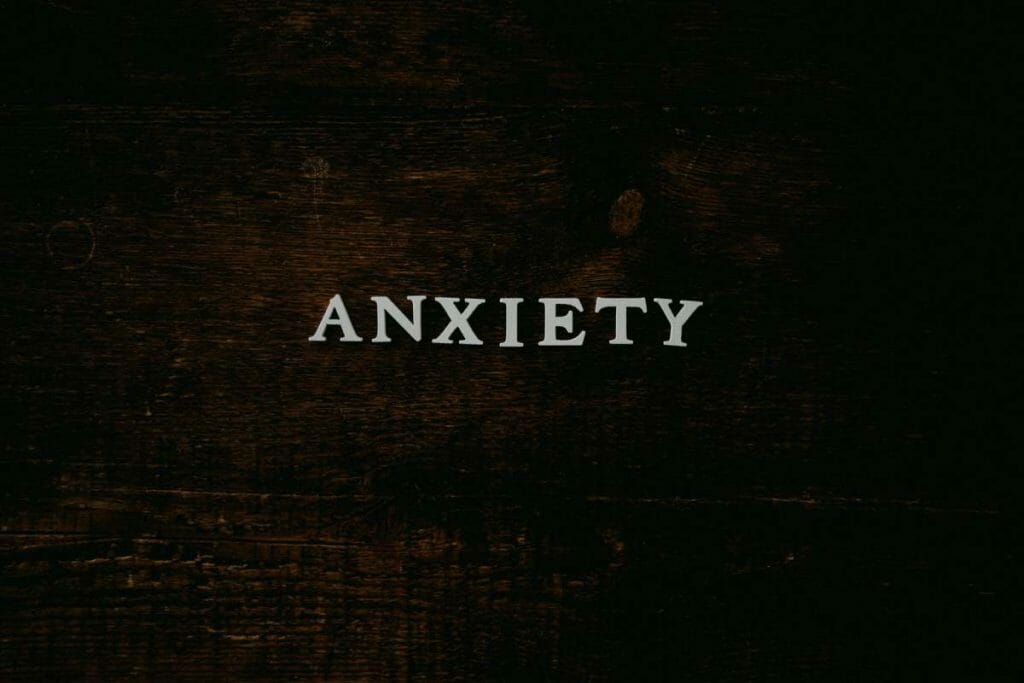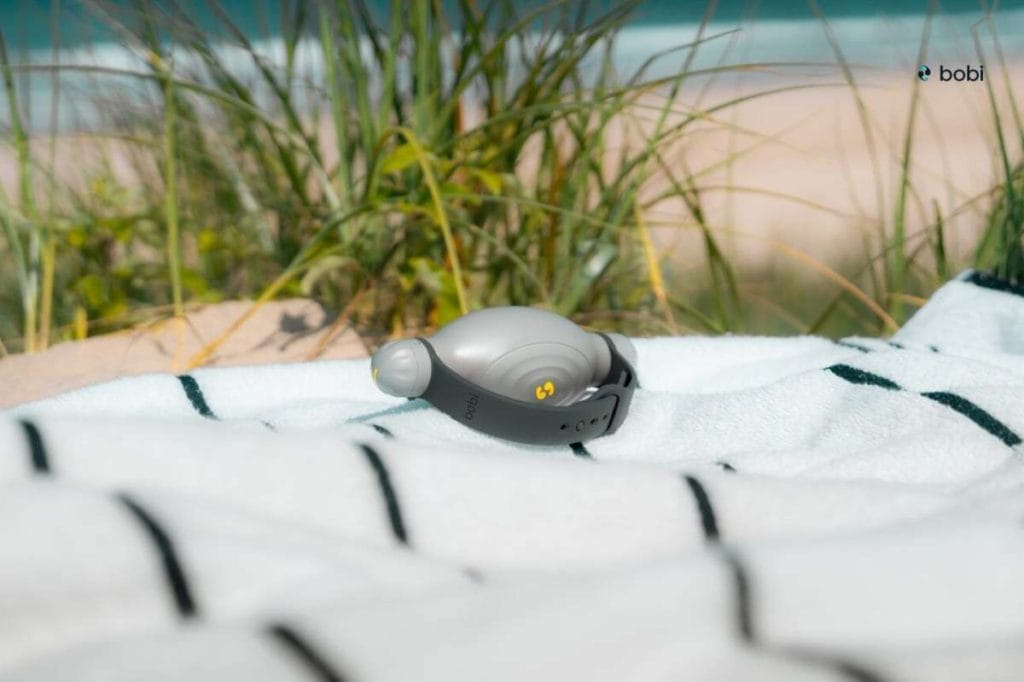Natural Anxiety Relief: Manage Anxiety with bobi
Anxiety is a normal and natural response to stress or danger, but many people seek natural anxiety relief when it becomes overwhelming. This emotion manifests as fear, nervousness, restlessness, or agitation in response to perceived threats. While anxiety can motivate us to take action and protect ourselves, excessive or persistent anxiety can disrupt our daily lives and evolve into a disorder.
Anxiety disorders affect millions of people worldwide and can significantly impact their quality of life. Therefore, effective management in the form of natural anxiety relief is essential to living a normal healthy life. We’ve designed this post to introduce you to all the possible treatments for anxiety including medications, therapies, mindfulness techniques, natural remedies along lifestyle changes. However, the immediate best treatment for anxiety is bobi _ an innovative device that relieves anxiety instantly.
Science Behind Anxiety Disorders
Anxiety disorders are a group of mental health conditions characterized by excessive and persistent anxiety and fear. They include generalized anxiety disorder, panic disorder, and social anxiety disorder, among others.
Symptoms of anxiety disorders can vary depending on the type of physical and mental symptoms of the disorder. Common symptoms include feelings of fear or dread, nervousness, restlessness, agitation, and tension. Physical symptoms such as sweating, trembling, rapid heartbeat, and shortness of breath may also occur.
Anxiety is not just a feeling; it is also a set of thoughts and emotions that can be difficult to manage. People with anxiety disorders may experience intrusive or obsessive thoughts and worry excessively about future events or past experiences. These thoughts and emotions can lead to avoidance behaviors and interfere with daily activities.
An essential step in managing and treating anxiety disorders is a complete understanding of anxiety. By recognizing the symptoms and triggers of anxiety, we can learn to cope with our emotions and develop strategies to manage them. It is also important to seek professional help if anxiety is interfering with our daily lives or causing significant distress.
Medical Treatments for Anxiety
When it comes to treating anxiety, there are several medical options available. These include medications and therapy, both of which can be effective in managing symptoms.
Medications

Prescription medications such as anti-anxiety medication and antidepressants have been used as a front-line treatment for treating stress and anxiety over many decades. Examples of these medications include Xanax and benzodiazepines like Valium. These medications work by slowing down the central nervous system.
Another type of medication commonly used to treat anxiety is selective serotonin reuptake inhibitors (SSRIs). These drugs work by increasing the levels of serotonin in the brain, which can help regulate mood and reduce anxiety. Examples of SSRIs include Prozac, Zoloft, and Lexapro.
There’s a lot of ongoing discussion about whether prescribing medication is effective and suitable for treating anxiety. There are significant and lasting concerns about the negative side effects of medications used for anxiety and depression treatment. These side effects have been identified as including:
- Increased risk of suicide.
- Sexual dysfunction.
- Increased risk of dementia.
- Insomnia.
- Weight gain.
- ‘Rebound anxiety’ with discontinuation of medication.
One recent study conducted by researchers at Wayne State University and the Harvard Medical School indicates that “SSRIs may provide little benefit in relieving symptoms of anxiety”.
The authors went on to conclude that the limited clinical benefit of taking SSRIs does not justify their use given the associated risks. There are similar concerns for the use of Xanax in treating anxiety and depression noting the risk of abuse and dependence relating to this specific class of drug.
It’s important medication is always prescribed and monitored by a doctor, with the associated short, medium, and long-term risks openly discussed and acknowledged.
Therapy
Cognitive behavioral therapy (CBT) is a type of therapy that’s proven to be effective in treating anxiety. This type of therapy involves identifying negative thought patterns and replacing them with more positive and realistic ones. CBT, with its roots in Stoic philosophy, can improve anxiety symptoms and also help individuals develop coping skills to manage anxiety symptoms.
Other types of therapy that may be helpful for anxiety include exposure therapy and mindfulness-based therapy. Exposure therapy involves gradually exposing individuals to anxiety-provoking situations in a safe and controlled environment. Mindfulness-based therapy focuses on being present at the moment and accepting thoughts and feelings without judgment.
In my practice, as both a CBT clinician and advocate of mindfulness/breathing techniques, I have observed the greatest impact on clients when mind/body therapies are used in a complementary manner. Slow, controlled, breathing remains a foundational skill for mental health. Unfortunately, many people who engage in psychological therapy struggle to develop and maintain good breathing habits and this often impedes their therapeutic progress.
Lifestyle Changes for Natural Anxiety Relief
When it comes to natural anxiety relief, lifestyle changes can play a significant role in managing anxiety symptoms. Here are some lifestyle changes that can help alleviate anxiety symptoms:
Exercise
Regular exercise is a great way to reduce stress and anxiety. Exercise releases endorphins, which are natural mood boosters, and can help improve sleep quality. Try to aim for at least 30 minutes of moderate exercise, such as brisk walking, jogging, or cycling, most days of the week.
Sleep
Getting enough sleep is crucial for managing anxiety. Lack of sleep can make anxiety symptoms worse, and anxiety itself can interfere with sleep. Try to stick to a regular sleep schedule, avoid caffeine and alcohol before bedtime, and create a relaxing bedtime routine to help you with natural anxiety relief.
Diet
Diet can also play a role in managing anxiety. Eating a balanced diet with plenty of fruits, vegetables, whole grains, and lean protein can help support overall brain health, and reduce inflammation. These are the leading causes of anxiety. Avoid processed foods, which can be high in sugar and unhealthy fats, and limit caffeine intake, which can increase anxiety symptoms in some people.
Smoking and Alcohol
Smoking and alcohol can both increase anxiety symptoms and interfere with sleep. Quitting smoking and limiting alcohol intake can help improve overall mental and physical health and reduce anxiety symptoms.
Stress Management
Stress can trigger anxiety, so finding ways to manage stress can be helpful. Try stress-reducing techniques such as slow breathing, meditation, yoga, or tai chi. To reduce stress take breaks throughout the day, prioritize self-care, and practice time management.
Environment
Creating a calming environment can also help reduce anxiety. Try to reduce clutter and create a peaceful space at home. Surround yourself with calming scents, such as lavender or chamomile, and consider incorporating relaxation techniques, such as aromatherapy or warm baths into your routine.
Lifestyle changes can be an effective way to manage anxiety symptoms naturally. There are many things that you can do like getting enough sleep, doing regular exercises, eating a healthy diet, limiting smoking and alcohol, practicing stress management techniques, and creating a calming environment can all help reduce or relieve anxiety symptoms and provide you with natural anxiety relief.
Mindfulness and Relaxation Techniques

When it comes to natural anxiety relief, mindfulness and relaxation techniques are often recommended. These techniques can help us to calm our minds and bodies, reducing feelings of chronic stress, and anxiety. Here are some techniques that can be helpful:
Mindfulness Meditation
Mindfulness meditation involves focusing on the present moment and observing our thoughts and feelings without judgment. This can help us to become more aware of our thoughts and feelings, and to develop a more positive relationship with them.
Research has shown that mindfulness meditation can be effective in reducing symptoms of anxiety.
Slow Breathing
Slow breathing exercises can also help reduce anxiety. You can slow down your heart rate and feelings of tension by taking slow, controlled breaths. One technique that can be used is called diaphragmatic breathing, which involves breathing deeply into the abdomen rather than shallowly into the chest.
Yoga
Yoga is another technique that can help reduce anxiety. It combines physical postures with breathing exercises and meditation. According to research yoga is effective in reducing symptoms of anxiety.
Progressive Muscle Relaxation
Progressive muscle relaxation involves tensing and relaxing different muscle groups in the body. This can help us to become more aware of the physical sensations associated with anxiety, and to learn how to relax our bodies. In a recent study progressive muscle relaxation was found helpful in treating anxiety symptoms.
Incorporating mindfulness and relaxation techniques into our daily routine can be a helpful way to manage anxiety. These techniques can be practiced on their own or in combination with other natural anxiety relief strategies, such as exercise and diet. It’s important to find the techniques that work best for us and to practice them regularly to experience the full health benefits.
Natural Remedies for Anxiety with bobi
Anxiety is a common mental health condition that can be caused by a variety of factors, including stress, genetics, and lifestyle. While pharmaceutical options have been working for a long time, natural remedies are also effective in managing anxiety. In this section, we’ll explore some medication-free treatment strategies for anxiety, including the bobi breathing device.
bobi Breathing Device
bobi is a breathing device that helps users improve their breathing techniques, which can reduce anxiety and stress. With bobi, users learn how to breathe more effectively, which can help regulate their heart rate and reduce feelings of anxiety. bobi is designed to coach its users to develop, over time, a slow rate of breathing. bobi’s design also incorporates progressive muscle relaxation given the physical action of squeezing, and releasing the device.
Chamomile
Used for centuries, chamomile serves as a natural remedy to treat anxiety and foster relaxation. Many people choose chamomile tea to aid in relaxation, which is available at most grocery stores. Additionally, chamomile supplements can be taken daily for anxiety management.
Lavender
Known for its calming properties, lavender has proven to be effective in alleviating anxiety and inducing relaxation. The essential oil of lavender, often used in aromatherapy, allows individuals to inhale its soothing scent. For daily anxiety management, lavender supplements are also an option.
Magnesium
Essential for numerous bodily functions, magnesium plays a pivotal role in regulating the nervous system. A magnesium deficiency is often associated with heightened anxiety. To combat this, one can opt for magnesium supplements or consume magnesium-rich foods like spinach, almonds, and avocados.

Coping with Severe Anxiety Disorders/Panic Attacks
Living with severe anxiety disorders like Generalized Anxiety Disorder (GAD), Obsessive-Compulsive Disorder (OCD), Post-Traumatic Stress Disorder (PTSD), and phobias can be challenging. Coping with chronic anxiety can be a daily struggle, and it’s essential to find natural anxiety relief techniques that work for you.
If you’re experiencing panic attacks, it’s important to know they are treatable, and you don’t have to suffer alone. Panic attacks can be managed with effective intervention strategies. The most prominent feature of panic attacks is often hyperventilation. This is simply rapid and shallow breathing from the upper chest. Hyperventilation leads to a reduction in carbon dioxide in your body and results in a sensation that feels as if you are suffocating, or not getting enough air. This is sometimes referred to as ‘air hunger’.
The most effective intervention for someone experiencing a panic attack is slow, controlled breathing. Unfortunately, when you’re in a state of high anxiety or panic it can be very difficult to consciously think your way through the state of distress. One effective technique, popularized on social media platforms, is to hold a piece of ice in your hand. It acts as a distraction from the distress, giving you the ability to focus on regaining control and slowing down your breath. This is a technique commonly used in Dialectal Behavior Therapy.
Living with severe anxiety disorders and panic attacks can be challenging, but there are natural anxiety relief techniques that can help you cope. Seeking professional help, developing a support system, and practicing self-care can all be effective ways to manage symptoms and improve your quality of life.
The Role of Diet in Anxiety Management
As we work towards managing anxiety, it’s essential to understand the role of diet in our overall mental and physical health. Our diet can impact our emotions, mood, and energy levels. Therefore, it’s crucial to pay attention to what we eat and how it makes us feel.
Research suggests that a balanced diet is a natural way to relieve anxiety fast. A diet rich in fruits, vegetables, whole grains, lean proteins, and healthy fats can provide the necessary nutrients that our body and brain need to function correctly. A balanced diet can help regulate our blood pressure and sugar levels and improve gut health, both of which can impact our mental health.
Fruits and vegetables are essential components of a balanced diet and can help reduce anxiety symptoms. They are rich in antioxidants, vitamins, and minerals that help reduce inflammation and oxidative stress in the body.
Some fruits and vegetables that are particularly beneficial for anxiety management include blueberries, bananas, spinach, kale, and broccoli.
Maintaining a balanced diet is crucial for managing anxiety symptoms. Eating a variety of foods from different food groups can help ensure that we get all the necessary nutrients that our body and brain need to function correctly. Additionally, it’s essential to avoid consuming too much caffeine and alcohol, which can worsen anxiety symptoms.
The Connection Between Anxiety and Other Mental Health Conditions
Anxiety disorders are among the most common mental health conditions, affecting millions of people worldwide. These disorders can be debilitating, causing significant distress and interfering with daily life. However, anxiety often co-occurs with other mental health conditions, such as depression, making it difficult to diagnose and treat anxiety treatment.
According to research anxiety and depression are closely related, with many people experiencing symptoms of both conditions. Up to half of all people diagnosed with depression also have symptoms of anxiety. Similarly, people with anxiety disorders are at a higher risk of developing depression. This connection between anxiety and depression is thought to be due to shared biological and environmental factors, such as genetic predisposition, brain chemistry, and life stressors.
Other mental health disorders and conditions, such as bipolar disorder and post-traumatic stress disorder (PTSD), may also co-occur with anxiety. For example, people with bipolar disorder may experience anxiety during manic or depressive episodes. Similarly, PTSD is often characterized by symptoms of anxiety, such as hyper-vigilance and avoidance behaviors.
Despite the complex interplay between anxiety and other mental health conditions, there are effective treatment options available. Certain interventions, such as cognitive behavior therapy (CBT), can help individuals learn coping skills and manage symptoms of anxiety and depression. Simple lifestyle changes such as exercise, mindfulness, and a healthy diet, can also improve overall well-being and reduce symptoms of anxiety and depression.
Conclusion
Anxiety, if not managed, can escalate into a severe disorder. Addressing its symptoms and triggers is essential for effective treatment, which can include medical interventions and lifestyle changes. Practices such as regular exercise, sufficient sleep, a balanced diet, and stress management, along with mindfulness techniques like yoga and slow breathing, can naturally mitigate anxiety symptoms. Early intervention is key to preventing the progression of the disorder.
The creation of bobi was inspired by my observations of clients struggling to establish healthy breathing habits in therapy. The recent mandate for daily conscious breathing classes in New York schools underscores the global recognition of breathing as a crucial mental health tool. Having navigated major life stressors and worked therapeutically with numerous clients, I can attest to bobi’s unparalleled ability to aid anyone in achieving a state of reduced stress and anxiety. Get your bobi from here.
.
FAQs
- What is Anxiety?
Anxiety is a natural response to stress or danger, characterized by feelings of fear, nervousness, restlessness, or agitation. It can help motivate us to take action but can become a disorder when excessive or persistent.
- What Lifestyle Changes Can Help Alleviate Anxiety?
Lifestyle changes include regular exercise, adequate sleep, a balanced diet, limiting smoking and alcohol, practicing stress management techniques, and creating a calming environment.
- How Can Mindfulness and Relaxation Techniques Aid in Anxiety Relief?
Techniques like mindfulness meditation, slow breathing exercises, yoga, and progressive muscle relaxation can help calm the mind and body, reducing feelings of chronic stress and anxiety.
- How Does bobi Differ from Other Natural Remedies for Anxiety?
Unlike herbal remedies, bobi is a physical device that aids users in enhancing their breathing techniques. It’s designed to coach users to develop a slow rate of breathing over time. Additionally, bobi’s design incorporates features like a palm pad that can be stored in a freezer, offering a unique intervention, especially for people who experience high states of anxiety.
- How can I naturally calm an anxiety/panic attack with bobi?
bobi is a breathing and grounding tool that can help calm the mind and body during an anxiety or panic attack. bobi works by providing a tactile guide to coach people to slow their breathing. bobi also incorporates progressive muscle relaxation, a scientifically supported method to reduce stress and anxiety.
References:
- Chen, K. W., Berger, C. C., Manheimer, E., Forde, D., Magidson, J., Dachman, L., & Lejuez, C. W. (2012). Meditative Therapies for Reducing Anxiety: A Systematic Review and Meta-analysis of Randomized Controlled Trials. PubMed Central (PMC). Link
- Harvard Health Publishing. (n.d.). Relaxation techniques: Breath control helps quell errant stress response. Harvard Health. Link.
- Woodyard, C. (2011). Exploring the therapeutic effects of yoga and its ability to increase quality of life. PubMed Central (PMC). Link.
- Jalife, J. (2011). Déjà vu in the theories of atrial fibrillation dynamics. PubMed Central (PMC). Link.
- Sugarman, M. A. Are You Taking SSRIs? Antidepressants For Anxiety. Anxiety Disorders and Universal Health Care. Link.













